Handstand and Adjustments
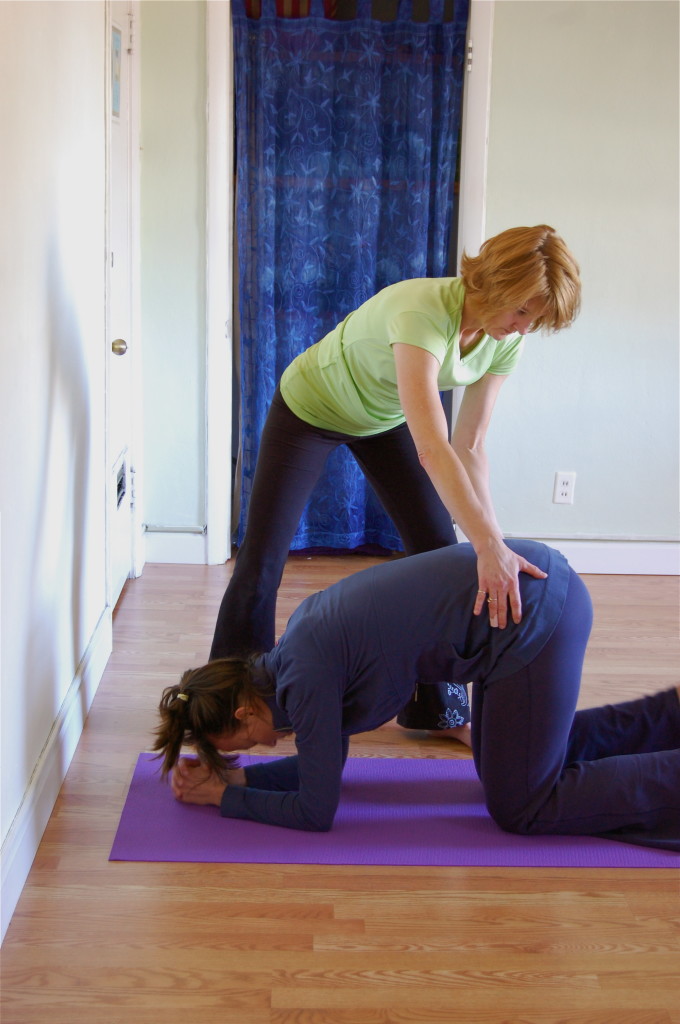
Handstand or Four Arm Balance begins always with the wall. We come to the wall as a support to expand playfully into the journey of turning upside down. In order to know if you are ready to practice handstand or four arm balance, first make sure you can first do Downward Dog with arms and torso in one line and also that you are able to lower your body into Plank without resting the chest or legs on the floor.
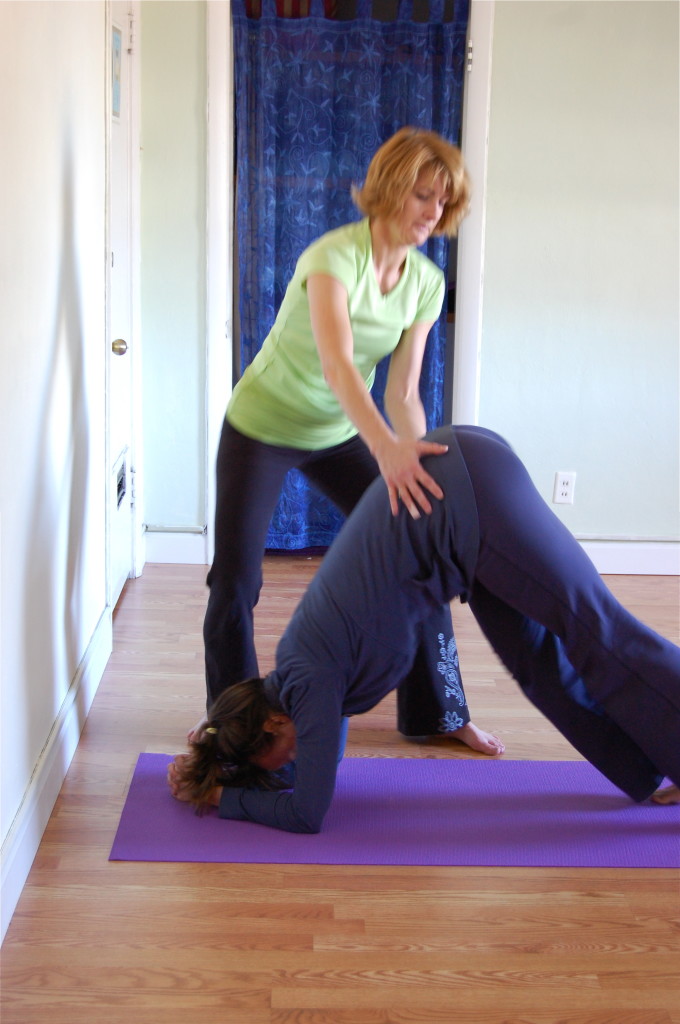
When you are offering a partner assist, make sure to stand on the opposite side of their primary kicking leg. Place your hands on their pelvis while facing their legs in order that you can lift them firmly, or "scaffold the posture". This kick is coming from the stronger leg, generating some momentum, not really core strength! This is the first place to begin. Always, when adjusting students, make sure you are assisting them but not doing it for them.
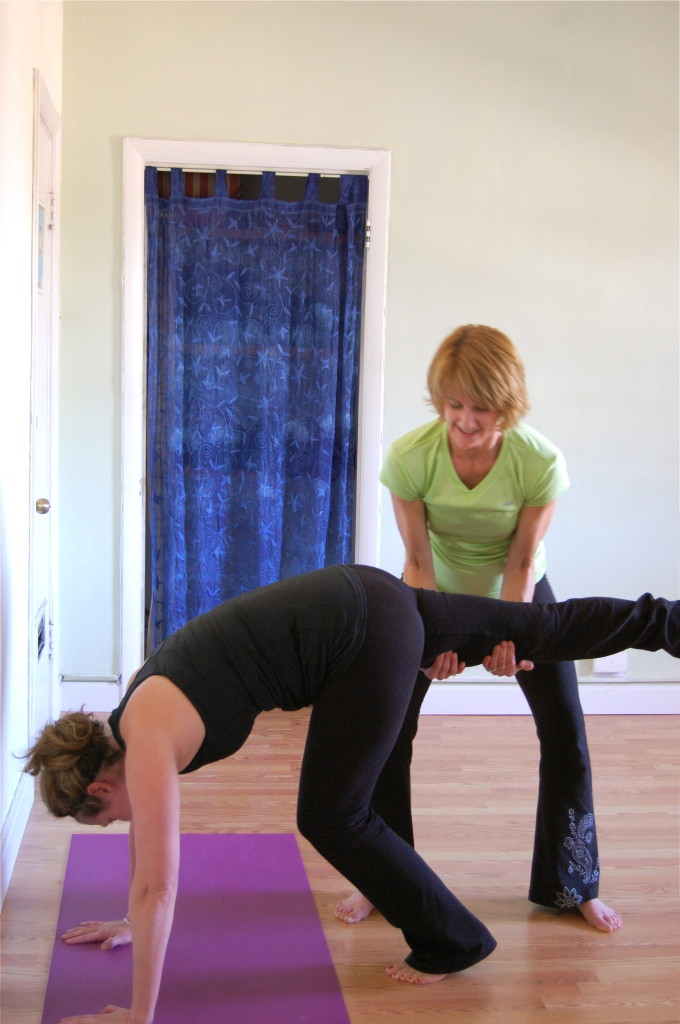
We move here to generate an assisted posture that encourages greater core strength! A variation of partner to do this is simply hold your partner's thigh with both hands and wait. Be a mirror for your partner, bend your knees, allowing them to lift up with their own core strength their 2nd leg. This takes some practice.
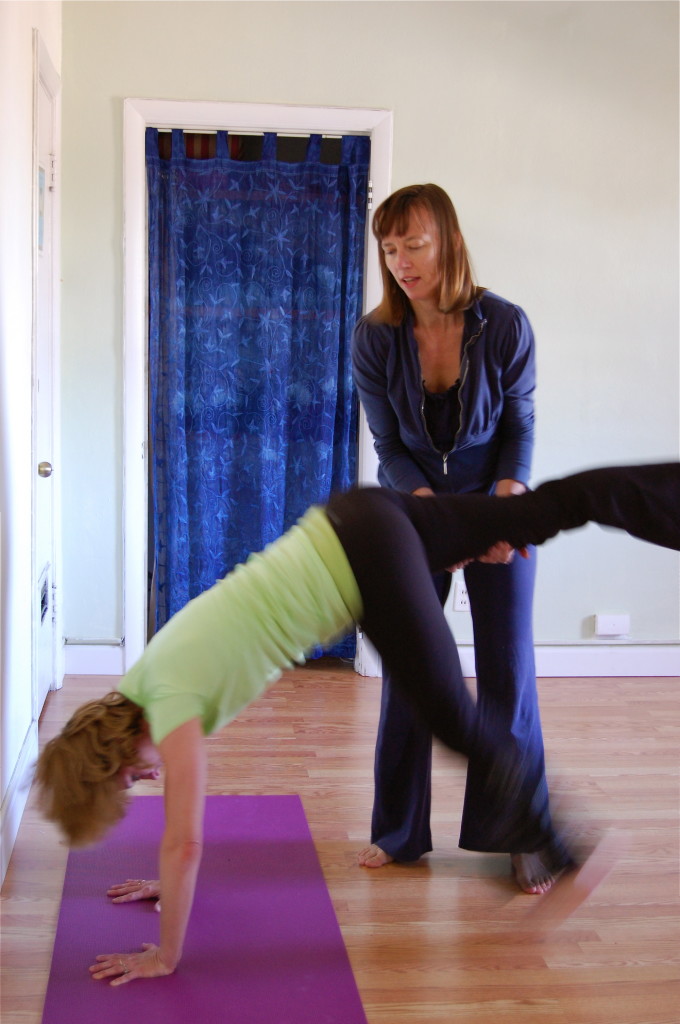
It's a lift off!..From our Bhandas or root lock, we squeeze our bathroom muscles together and lift out of the abdominals soften the rib cage and stack the joints of the body. It takes more time and effort, but feels remarkably like home when we use our internal levers to get strong.
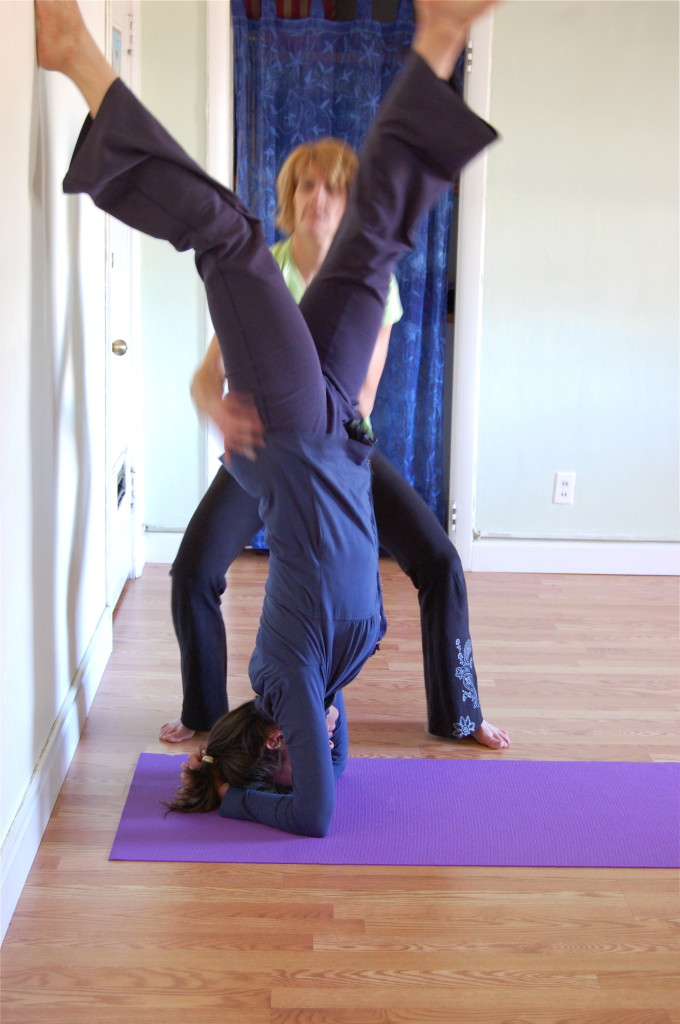
As you can see, the intention to work from the core results in a lightening quick element which when accelerated into a full four arm balance, allows the partner to use minimal support and student receive maximum benefit. When it comes to practicing these types of inversions, proper partner assisted adjustments provide a world of difference. Now with the help and support of a teacher, the student is able to perform the postures safely as well as receive the many benefits inversions have to share.
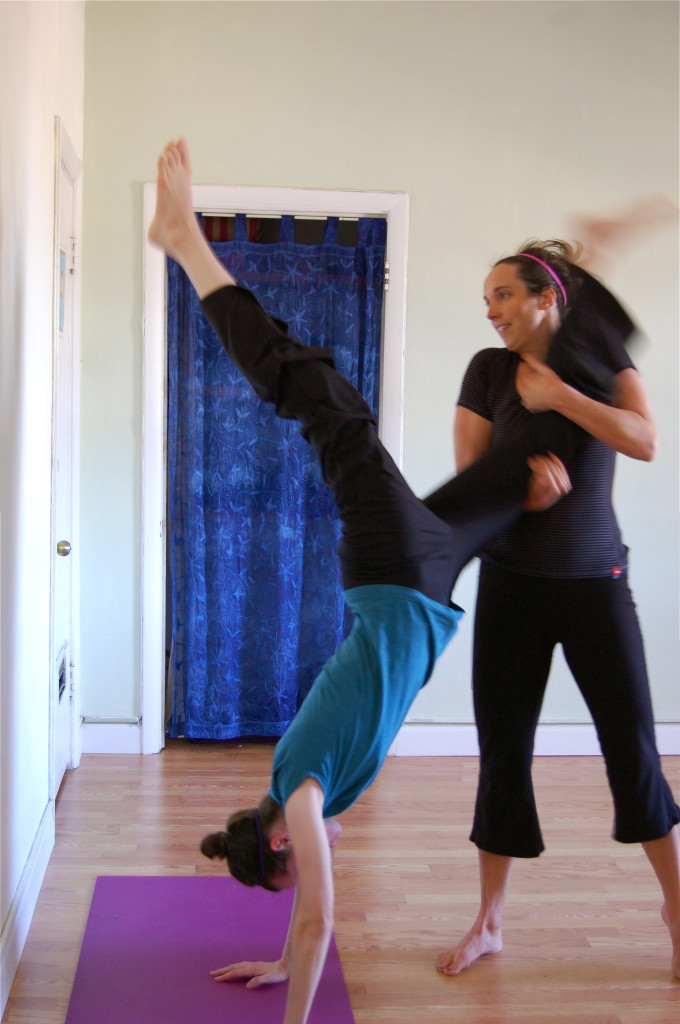
This is not done wrong! Just an illustration of two people trying to find better symbiosis. Grabbing or clutching the leg actually prevents her partner from feeling the full measure of INNER POWER!
Important, when you hold the thigh, be strong and wait, allow your partner space and practice time to lift their own opposite leg from Mula Bhanda and core!
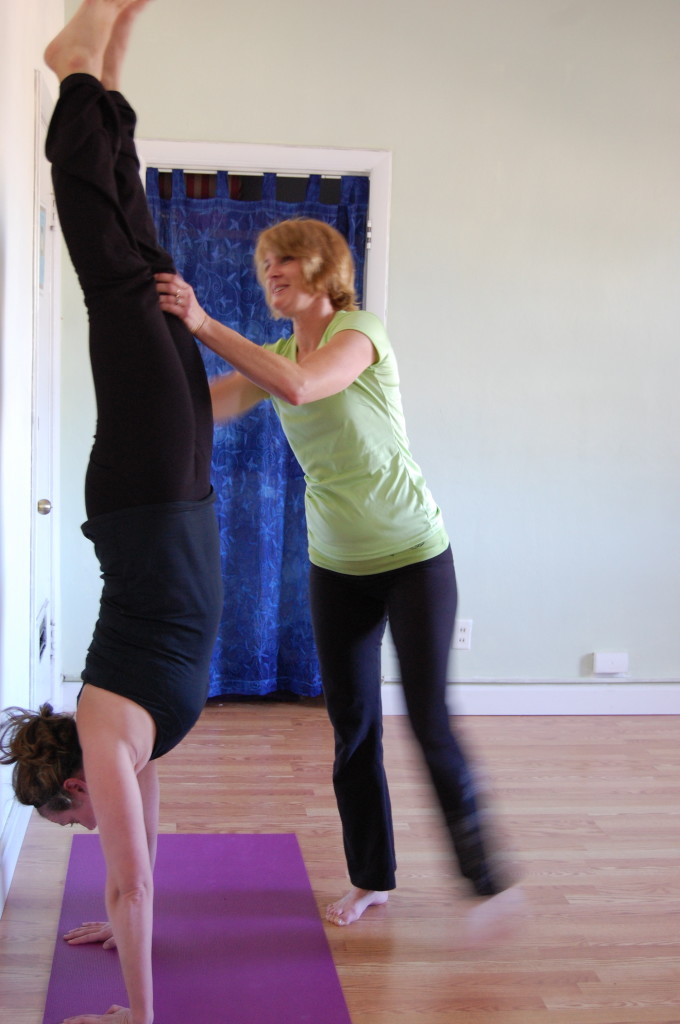
This particular student experiences handstand for the first time! With the help of the wall and the partner, she feels very safe and confident to take her practice to the next level. In doing so, you can see how quickly she has formed one straight line from her feet all the way to her palms. This feels incredible as if one weighs only 2 lbs! Practice and Have Fun!...
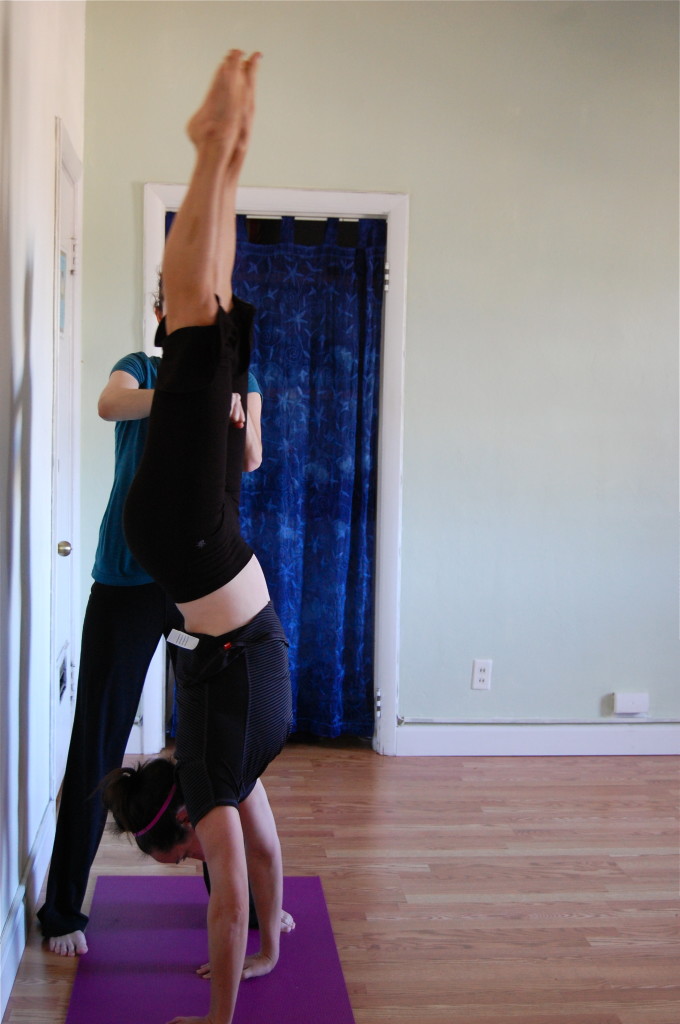
This picture illustrates again the dropping forward of the ribcage and the slight banana in the back! The body goes into this posture as a protective mechanism in the case of falling. This holds true for all postures. The lower back moves into a higher arch and acts as the main shock absorber for the entire posture simply because it is the most flexible part of the body. So, we want to first neutralize the low back, and we do that by pulling the navel in and drawing the tailbone forward.
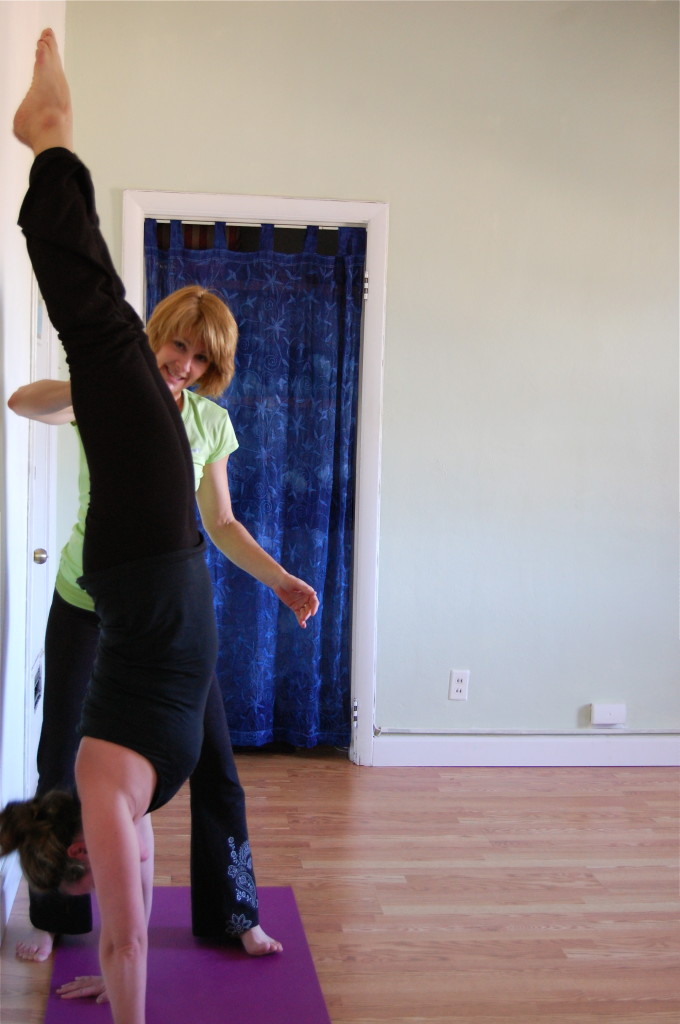
Bringing a block or tight fist between your partner's inner thigh and asking your buddy to squeeze that prop with all your might definitely is great alignment. This results in a wake up call for the energy centers, body and mind. And helps us all lighten up and enjoy a new fresh perspective!
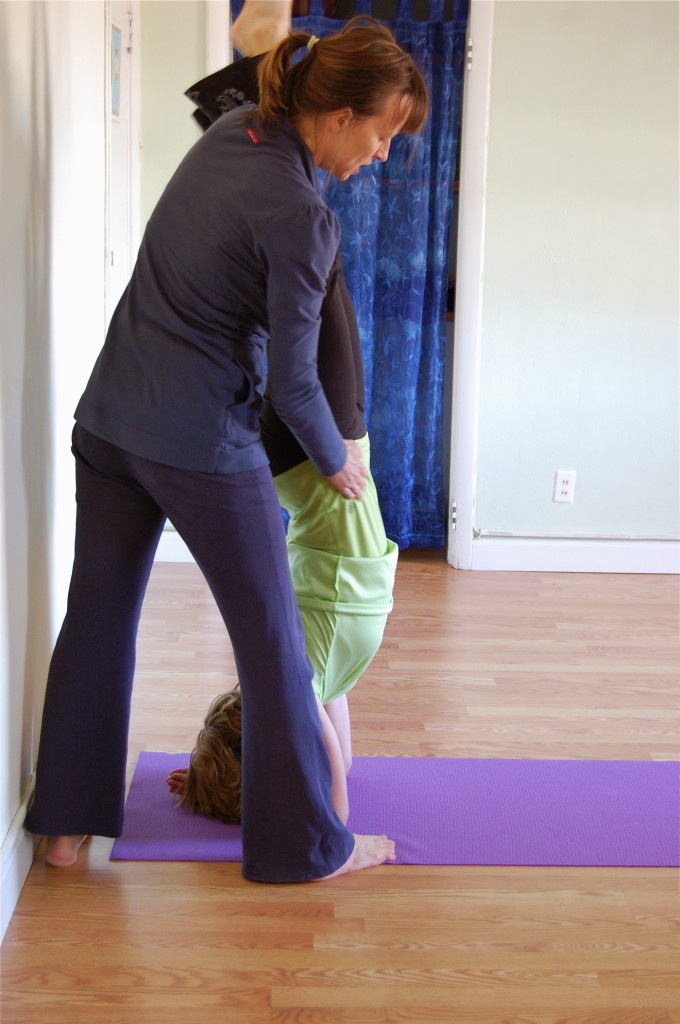
The partner assisted work here is to help engage the torso, soften the ribcage to drop down and into the back body, engage the tailbone to move forward gently and lift out of the torso equally, like Tadasana or Mountain Pose upside down.
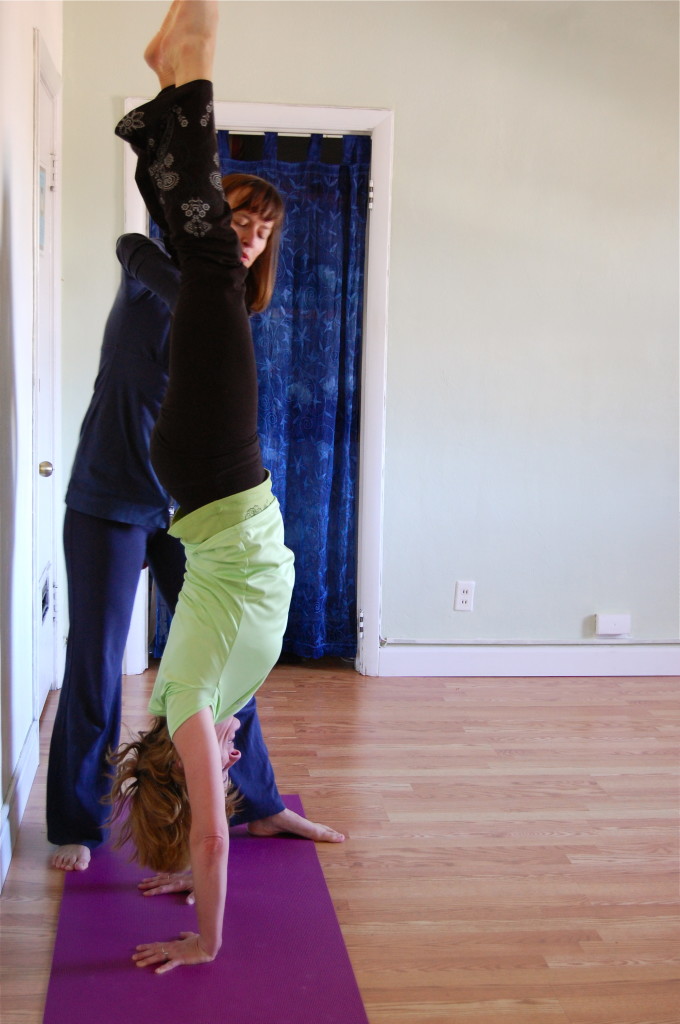
This picture demonstrates that for this student, a perfect straight line may not be the case. She is doing very well here and when asked, describes this pose as feeling great. Each body type will be unique and slightly different. Enjoy differences, life and go for feeling good...
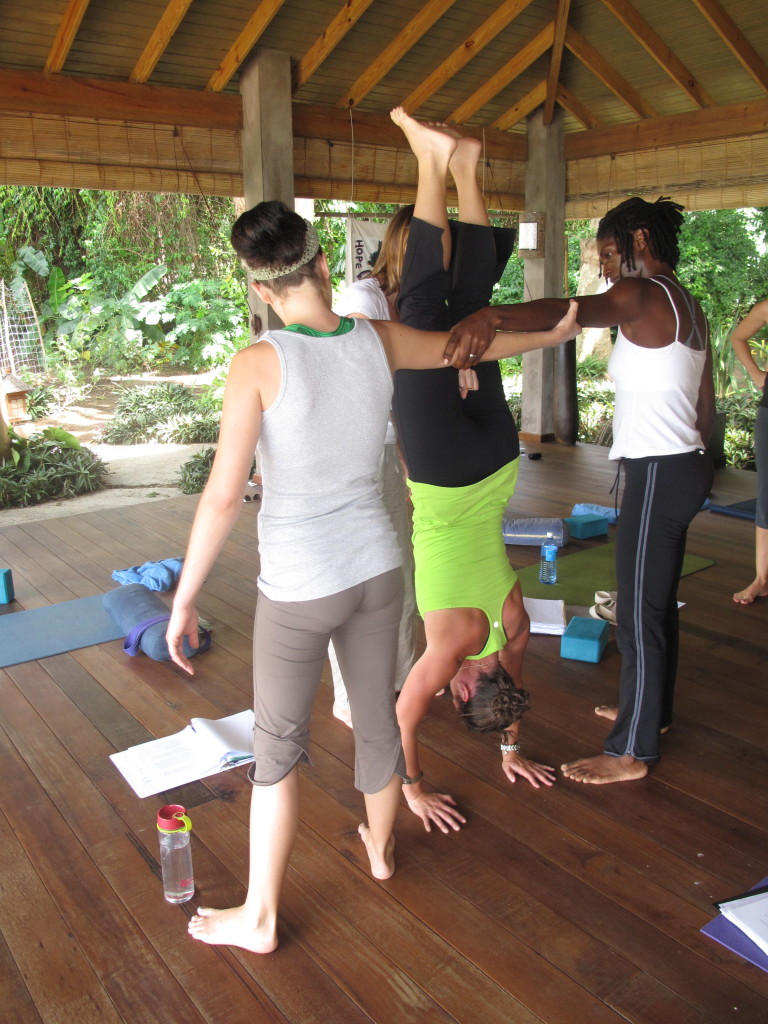
This Handstand is done without the support of a wall. Instead there are two partners helping one another to create a support beam. If you look at it carefully, you will see a fist right between the recipients legs, allowing the student to really feel strong from their own center, lightness and playfulness! This is the end result of all great yoga. Aligning the body correctly to receive great universal power.